The Great Railroad Revolution (35 page)
Read The Great Railroad Revolution Online
Authors: Christian Wolmar

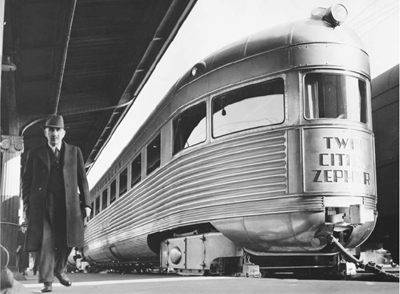

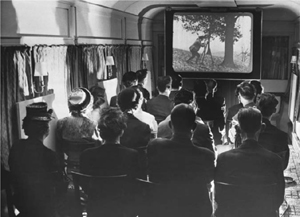

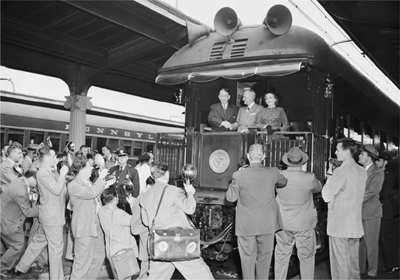
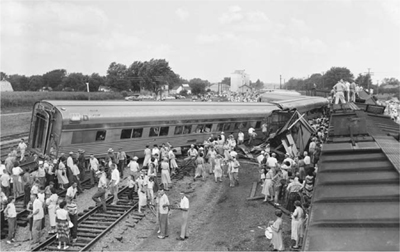
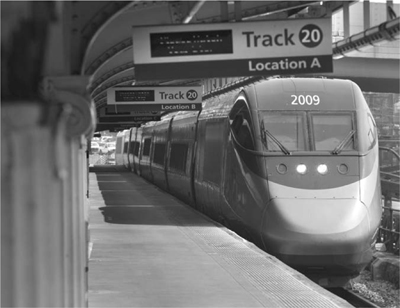
Eventually, the railroads tamed the Wild West that they had created. As they began to crisscross the vast lands of the West, they created enclosures, and soon the cowboys lost the open spaces that had made possible their long cattle trains north from Texas. Settlers began to fence in with barbed wire the lands that the railroads had sold them and, inevitably, ended the practice of cowboys driving the cattle over the prairies. The railroads could transport the beasts all the way to the stockyards of Chicago with much less loss of weight, and soon they would be traveling as carcasses in refrigerated wagons. The wilder elements of the population soon found their freedom curtailed: “Outlaws, gamblers, hoboes and other wanderers saw a gradual reduction in public wilderness land outside the bounds of any law, as most Western lands came into private hands before 1890.”
23
The freedom of movement of the Native Americans, too, was curtailed. Not only was their land purloined by the government to give to the railroads, but the
fences restricted their hunting grounds and effectively destroyed their way of life. Within a couple of decades of the arrival of the first transcontinental, the railroads had enabled the East to colonize the West and to impose its legal, economic, and social forms over it. It was not so much the union of two distinct parts of the United States, but rather the triumph of the East over the West and of the white men over the “red savages.”

With the rapid expansion of the railroads all across the United States, travelers benefited from a great improvement in the passenger service. Not only were there more trains, operating regularly to published timetables, but they were also becoming more comfortable for passengers. During the 1870s, many railroads began to offer more amenities and luxuries to the traveling public, although provision of these facilities remained patchy. Probably the most important improvement, at least to those who could afford it, was the Pullman sleeping car, which was essential for comfortable travel in such a vast country where journeys of three or four days were commonplace.
In the early days of the railroad, as we have seen, trains stopped for the night and, indeed, for meals, but this was impractical and unsatisfactory. A different arrangement was clearly needed, and it was not long in coming. Although indelibly associated with the name of George Pullman, the sleeping car was not his invention. Indeed, a primitive version of the sleeping car had been introduced on the Cumberland Valley Railroad, in Pennsylvania, as far back as 1839,
1
consisting of a pair of carriages each with four sets of three-tiered berthsâno more than hard boards with no bedding or mattressesâthat allowed passengers to lie down parallel to the tracks and were folded away during the day. A few years later, the New York & Erie Railroad provided two cars equipped with iron rods that could be used to link facing seats to create a crude and uncomfortable bed. However, as the cushions were made of horsehair cloth that penetrated all
but the thickest clothing and were often liberally infested with a variety of ravenous insects, getting to sleep in conditions described as “cramped, crude and uncomfortable” must have been solely the province of the inebriated. Furthermore, the poor condition of the track made it seem “like sleeping on a runaway horse,” according to one early traveler.
2
The railroad did not provide pillows or bedding, and passengers went to bed wearing their boots and breeches. By the 1850s, several American railroads were advertising sleeping-car accommodation that represented a slight improvement on what had gone before. The first real innovator was Webster Wagner, who is credited with the invention of the sleeping car, though he was merely building on the work of others. Wagner was a stationmaster on the New York Central, which had just come under the control of Cornelius Vanderbilt (about whom we will hear much more in the next chapter). Wagner had previously been a wagon maker and developed the idea of a car with a single tier of berths and bedding closets at each end, a definite improvement on all predecessors. Vanderbilt embraced the idea and provided the money to build four such cars. They immediately proved popular, demonstrating the viability of the concept, and soon different versions of sleeping cars appeared on several of the longer-distance railroads. It was, however, George Pullmanâwhose name would become synonymous with his productâwho developed the concept and revolutionized overnight travel on the American railroads.